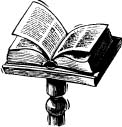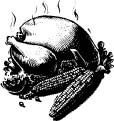Great Tales from English History, Book 2 (19 page)
Read Great Tales from English History, Book 2 Online
Authors: Robert Lacey
’This bloody stain and mark will never be washed out of Popish religion,’ declared Sir Thomas Smith, one of the many who called
for vengeance. Half century after the fires of Smithfield, the Gunpowder Plot marked a further stage in the demonising of
English Catholics, who, in the years that followed, were banned from practising law, serving in the army or navy as officers,
or voting in elections. In 1614 one MP suggested Catholics be compelled to wear a yellow hat and shoes so they could be easily
identified and‘hooted at’ by true Englishmen.
This last proposal was, happily, judged to be unEnglish and went no further. But the Gunpowder Plot raises important moral
issues to this day. Is violence permissible to a persecuted minority? And if you do strike back against a government that
subjects you to state-sponsored terror — why are you the one called a terrorist?
1611

’N
O MOR ENGLAND BOT GRATE BRITAINE:
noted a patriotic Scot in his diary, as James VI of Scotland and I of England rode out from Edinburgh to claim his southern
kingdom in the spring of 1603. When the new King opened his first Parliament in London, he urged his English subjects to join
more closely with Scotland — he called for a‘Union of Love — and on
16
November he signed a decree creating a new Anglo-Scottish currency featuring a twenty-shilling piece called‘the Unite’. Sadly
for James, his McPound proved impractical, but in 1604 he did initiate a project that would, over the years, make for unity
in another sense, and in a context far wider than England and Scotland.
As the clerics debated at the Hampton Court conference in 1604 one of them suggested that there should be’one only translation
of the Bible to be authentical’, and the King seized on the idea.‘One uniform translation’ should be produced, he agreed,‘by
the learned of both universities’, to be reviewed by the chief learned of the church’, then ratified by himself,‘Were I not
a King,’ he informed his bishops proudly,‘I would be a University man.’
Seven years, fifty-four translators and six committees later, the result of the King’s initiative was the Authorised Version’
that bears his name — the so-called King James Bible,‘Newly Translated out of the Originali tongues & with the former Translations
diligently compared and revised by his Maiesties Speciali Comandement — Appointed to be read in Churches’.
For two hundred and fifty years the King James Bible would set the standard for phraseology, rhythm and syntax wherever in
the world English speakers gathered — an English grammar and literature lesson in its own right. Sunday after Sunday its sonorous
cadences filtered into the English consciousness, shaping thought patterns as well as language — and this was just as King
James’s scholarly committees intended: the surviving records of their deliberations make clear that they searched constantly
for the words that would not only read better but
sound
better, for this was a lectern Bible, designed above all to be read out and listened to.
The dream of William Tyndale — and before that of John Wycliffe — had finally come true. Here was a Bible
that could be understood by every ploughboy built on a spare and simple vocabulary of only eight thousand different words
— and time after time the reviewing committees de-cided that William Tyndales translations were the best. They made only small
changes to his original phrases, so that, in the end, eighty per cent of this royally authorised’ version came from the man
who had been tracked down by Henry VIII’s agents seventy-five years earlier and had been burned at the stake.
’Our Father, which art in heaven, hallowed be thy name…’ Even today, in our relatively non-religious age, these memorable
Tyndale-King James lines may well be the most frequently repeated set of sentences in the English language.
1616

I
N THE SPRING OF lòlòTHE TOAST OF LONDON
was an exotic young arrival from the New World —‘Pocahontas’, the beautiful twenty-one-year-old daughter of Powhatan, chief
of the Algonquins of coastal Virginia. Her tribal name had been Matoaka, but her family had nicknamed her the‘naughty one’,
or spoilt child’ — and it was under her nickname that she had been brought to London to celebrate the nine-year survival of
Jamestown, Virginia. This was England’s first permanent colony in North America, established in Chesapeake Bay, a hundred
miles or so north of Ralegh’s‘lost colony’ of Roanoke.
Wined and dined and taken to London’s flourishing
theatres, Pocahontas was presented to King James I, after whom the new settlement had been named. Her visit spearheaded a
publicity drive by the investors of the Virginia Company who were looking for new colonists and partners. Much was made of
the young woman’s conversion to Christianity and her marriage to a wealthy tobacco planter, John Rolfe, by whom she had a
son. Even before Pocahontas died of pneumonia (or possibly tuberculosis) in March 1617, to be buried at Gravesend in Kent,
the Indian princess’ had come to symbolise the prospect of good relations between the new colonists and the native population.
That hope, we now know, was a cruel illusion. The modern United States of America has been built upon the systematic destruction
and dispossession of its native population — and the few reliable facts we possess about the life of Pocahontas place a question
mark over her myth. In 1612 she had been captured and held to ransom in the course of a savage series of attacks and reprisals
between colonists and locals, and according to the Powhatan nation of American Indians who champion her cause today, the marriage
of Pocahontas to the older, wealthy widower John Rolfe was anything but a love match: it was the price of her release.
The Never-Never Land aspects of transatlantic exploration were made clear the following year when Sir Walter Ralegh, now sixty-seven
and a creaking relic of the glory days of Elizabeth, sailed into Plymouth after a failed attempt to locate El Dorado, the
fabled city of gold that was said to lie in the rainforests of South America. Having flirted with ill-judged notions of conspiracy
in the early months of James’s reign, Ralegh had spent a dozen years imprisoned
in the Tower before winning temporary release on his far-fetched promise to bring back the treasures of El Dorado. But he
failed to locate the city. Furthermore, his frustrated followers attacked a Spanish settlement, and it suited James to sacrifice
the old Elizabethan to the Spanish protests that followed- “Tis a sharp remedy/ Ralegh re-marked as he felt die edge of the
axe in New Palace Yard on 29 October 1618,’but a sure one for all ills/
The flamboyant champion of England’s empire overseas went to his death not long before his dream — or something like it —
became reality. In September 1620 the Pilgrim Fathers set sail from Plymouth in their merchant ship, the
Mayflower.
They came mainly from the village of Scrooby in Nottinghamshire, where they had pursued a category of Puritanism known as‘Separatism’.
Abandoning the hope that they could‘purify’ the Church of England of its papist taints, the Scrooby Separatists looked abroad,
and in 1608 had exiled themselves to Protestant Holland. Among their leaders were the local postmaster William Brewster, and
a fervent Yorkshireman, William Bradford, who would later write the story of their great adventure.
But Bradford, Brewster and their companions did not find the welcome they expected in Holland. While they were allowed to
practise their religion, Dutch guild regulations prevented them from practising their trades. So they were after economic
as well as religious freedom when they boarded the
Mayflower
in the summer of 1620, landing on Cape Cod, in modern Massachusetts, on 9 November. To govern themselves they drew up the‘Mayflower
Compact’, the first written constitution in the Americas — indeed, the
first written constitution in the English language, in which the authority of government was explicitly based on the consent
of the governed. And having sailed from Plymouth, they named their colony Plymouth.
In the next two decades Plymouth Colony inspired more than twenty thousand settlers to create new lives for themselves in
the stockaded villages of‘New England’ — and it also inspired the great American festival of Thanksgiving. Tradition dates
this back to November 1621 when, after half Plymouth’s pilgrims had died of disease and famine, the local Indians came to
their rescue with a feast of turkey, corn on the cob, sweet potatoes and cranberries.
The rescue of 1621 is well documented, but more than two centuries were to elapse before we find Thanksgiving being celebrated
routinely on an annual basis. Not until 1863 was Abraham Lincoln encouraged by the rediscovery of William Bradford’s history
Of Plymouth Plantation
to reinvent the tradition and declare Thanksgiving a national holiday.
We should also, perhaps, revise our image of the Pilgrim Fathers all wearing sober black costumes with white collars and big
buckles on their shoes. Shoe buckles did not come into fashion until the late 1660s, and, as for the colonists’ costumes,
as inventoried on their deaths by the Plymouth plantation court, they sound more like those of pixies than pilgrims:
Mayflower
passenger John Howland died with two red waistcoats in his travelling chest; William Bradford also owned a red waistcoat,
along with a green gown and a suit with silver buttons, while the wardrobe of William Brewster, the former postmaster of Scrooby,
featured green breeches, a red cap and a fine‘Violet’ coat.
1622

T
HE JOHN TRADESCANTS
,
FATHER AND SON
, were England’s first master gardeners. John Sr made his name in the final years of Elizabeth’s reign, and was then hired
in 1609 by Robert Cecil, 1st Lord Salisbury, to beautify the gardens of his grand new home, Hatfield House in Hertfordshire.
John travelled to Holland to purchase the newly fashionable flower, the tulip, and spent no less than eighty shillings of
Cecil’s money (the equivalent of £440 today) on sacks of bulbs. In search of more exotic plants, he joined a trading expedition
to Russia in 1618, and two years later accompanied a squadron of English warships sent to
North Africa to quell the Barbary pirates. Among the spec-imens he brought home was the hardy perennial beloved of modern
gardeners, tradescantia.
But John was interested in more than plants. He started collecting local artefacts and curiosities on his travels, and this
passion of his received a powerful boost in 1622 when he became gardener to George Villiers, Duke of Buckingham, the controversial
favourite of King James I. Buckingham was Lord Admiral, and it was not long before the navy was instructing all English merchants
engaged in trade with the New World to be on the lookout for a lengthy list of rarities — in fact any thing that is strange
— drawn up by John Tradescant.